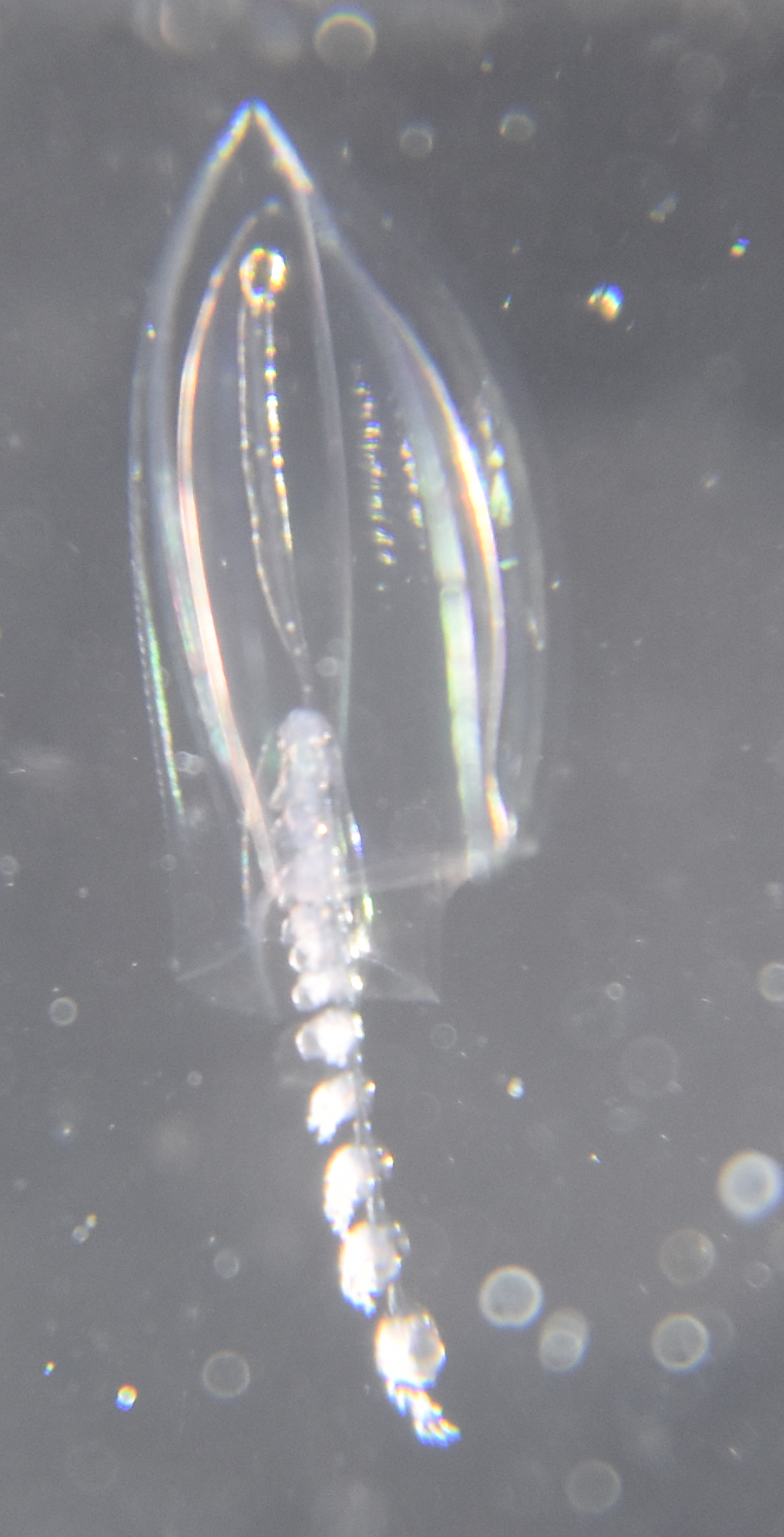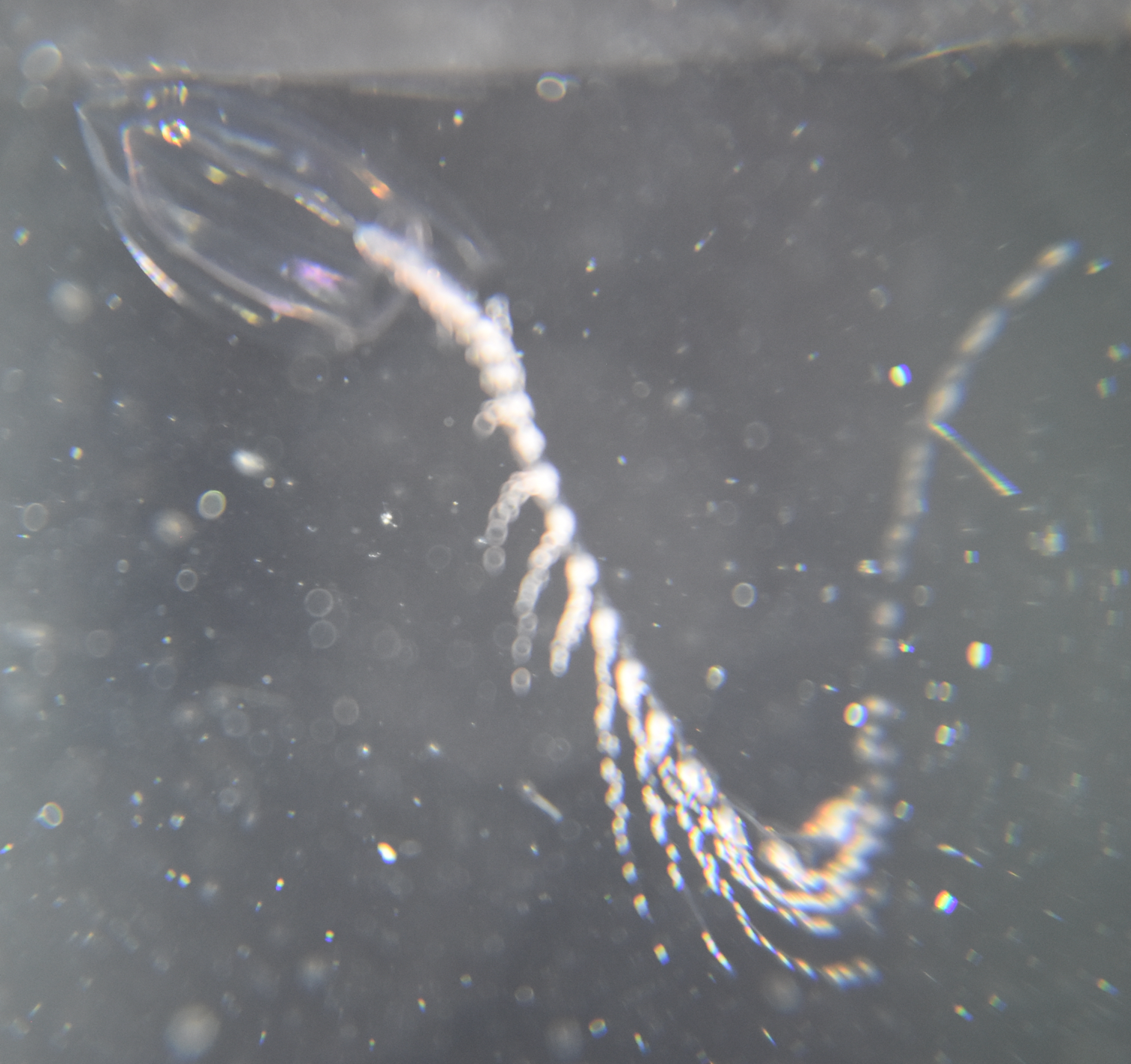Muggiaea atlantica Cunningham, 1892Common name(s): Siphonophore, Calycophoran siphonophore |
|
| Synonyms: | 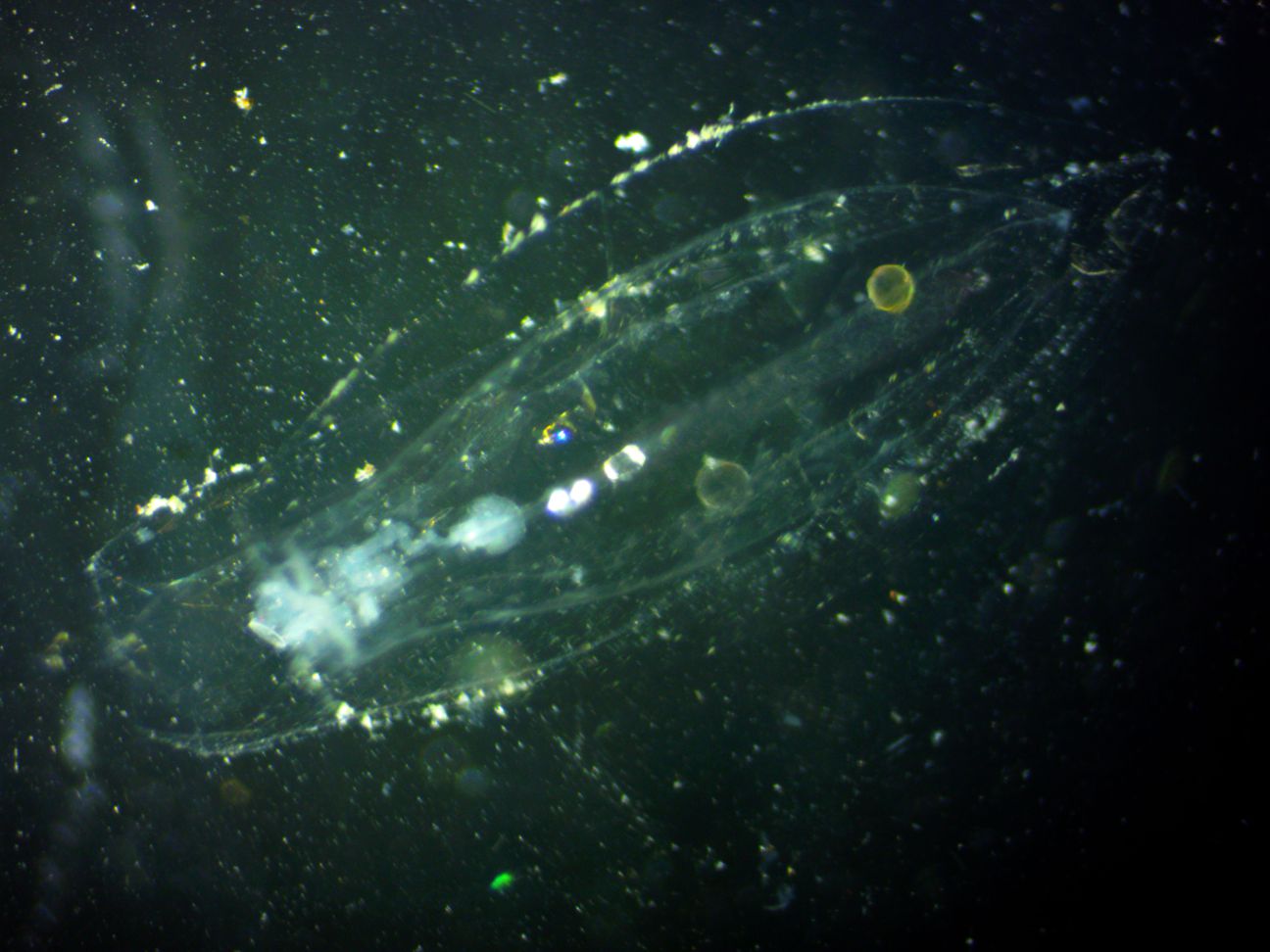 |
|
Phylum Cnidaria
Subphylum Medusozoa
Class Hydrozoa
Subclass
Hydroidolina
Order Siphonophorae
Suborder Calycophorae
Family Diphyidae
|
|
| Muggiaea atlantica, which is a single nectophore (8 mm long in this individul), captured in the Strait of Juan de Fuca on a 60-m vertical plankton tow. Ventral view, with the mouth to the left. A right-side view of the same nectophore is shown below. The green spheres are diatoms. | |
| (Photo by: Dave Cowles, August 2014) | |
Description: As a Calycophoran, this siphonophore has no gas-filled float, and only 1 or 2 nectophores (swimming bells). Muggiaea atlantica has only 1, elongated nectophore not over 3 cm long, with 5 straight or slightly curved, nonserrated, longitudinal ridges (photo). Besides the 5 sharp ridges on the sides, the nectophore comes to a sharp point at the apex (the ridges continue to this point). The nectophore is about twice as high as wide, and the hydroecium is less than half as deep as the apex of the nectosac (subumbrellar cavity), being about 1/3 the total length of the bell (photo). The somatocyst of the nectophore is relatively long, reaching about to the apex of the nectosac (photo). There are no teeth on the opening to the subumbrella (nectosac). Length of nectophore ranges up to about 5 mm (8 mm in the individual above)
How to Distinguish from Similar Species:Chelophyes appendicula has only 3 ridges. Lensia baryi and L. conoidea usually have 2 nectophores.
Geographical Range: Coastal Pacific, Indian, Atlantic, and Mediterranean oceans.
Depth Range:
Habitat: Pelagic, coastal
Biology/Natural
History:
Appears
to have a mutually exclusive range with Muggiaea
kochi. This can be one of the most abundant
surface planktonic
non-crustacean predators in the waters around the San Juan Islands
(Purcell,
1982). They seem to capture prey mainly at night, and
captured about
5-10 prey organisms per night.
| Return to: | |||
| Main Page | Alphabetic Index | Systematic Index | Glossary |
References:
Dichotomous Keys:Carlton, 2007
Kozloff, 1987, 1996
General References:
Wrobel
and Mills, 1998
Scientific Articles:
Purcell, J.E., 1982. Feeding and growth of the siphonophore
Muggiaea atlantica (Cunningham, 1893). Journal
of Experimental
Marine Biology and Ecology 62: pp 39-54
Web sites:
General Notes and
Observations: Locations, abundances,
unusual behaviors:
| To help locate the features of this clear, firm, gelatinous nectophore, the anatomical features visible in this right side view in the left photo are labeled in the right photo. Dorsal is up and ventral is down; the mouth is to the left. Solid lines depict outlines of the animal while dashed lines depict internal structures or cavities. The stem is retracted within the hydroecium in this photo. | |
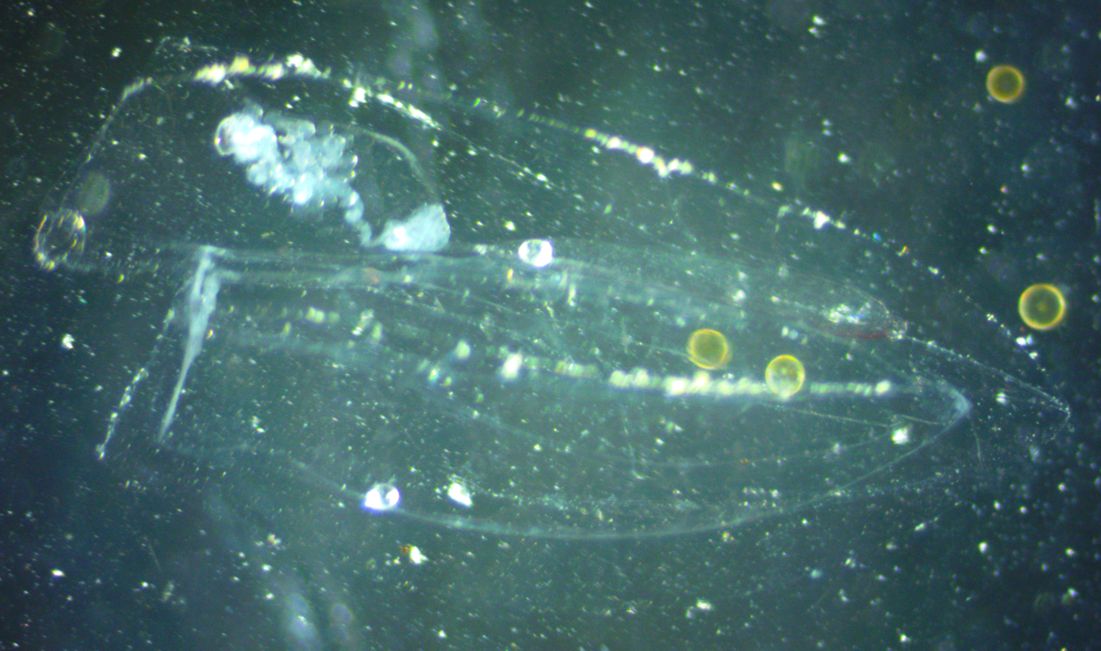 |
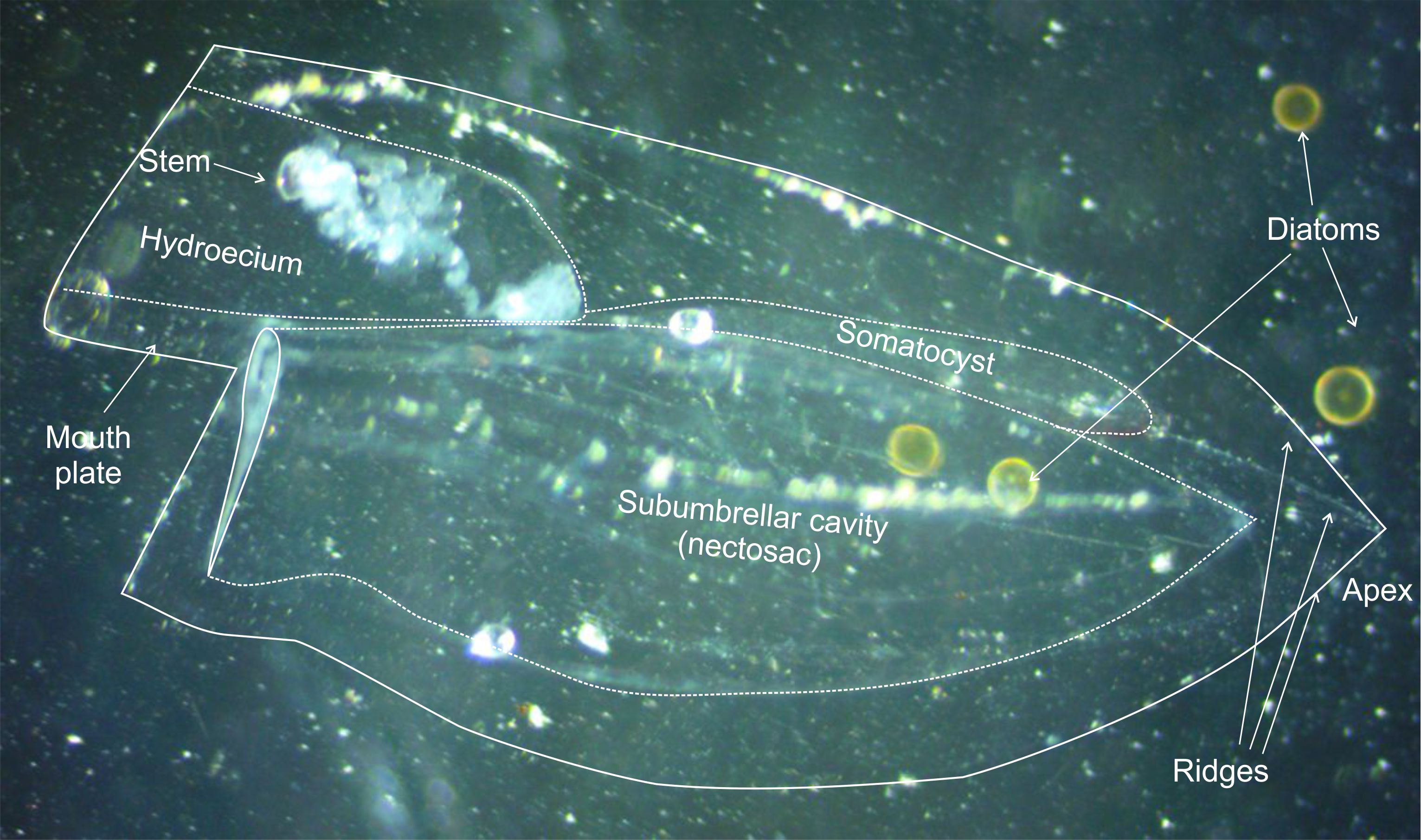 |
Authors and Editors
of
Page:
Dave Cowles (2014): Created original page
CSS coding for page developed by Jonathan Cowles (2007)
Salish Sea Invertebrates web site provided courtesy of Walla
Walla University
